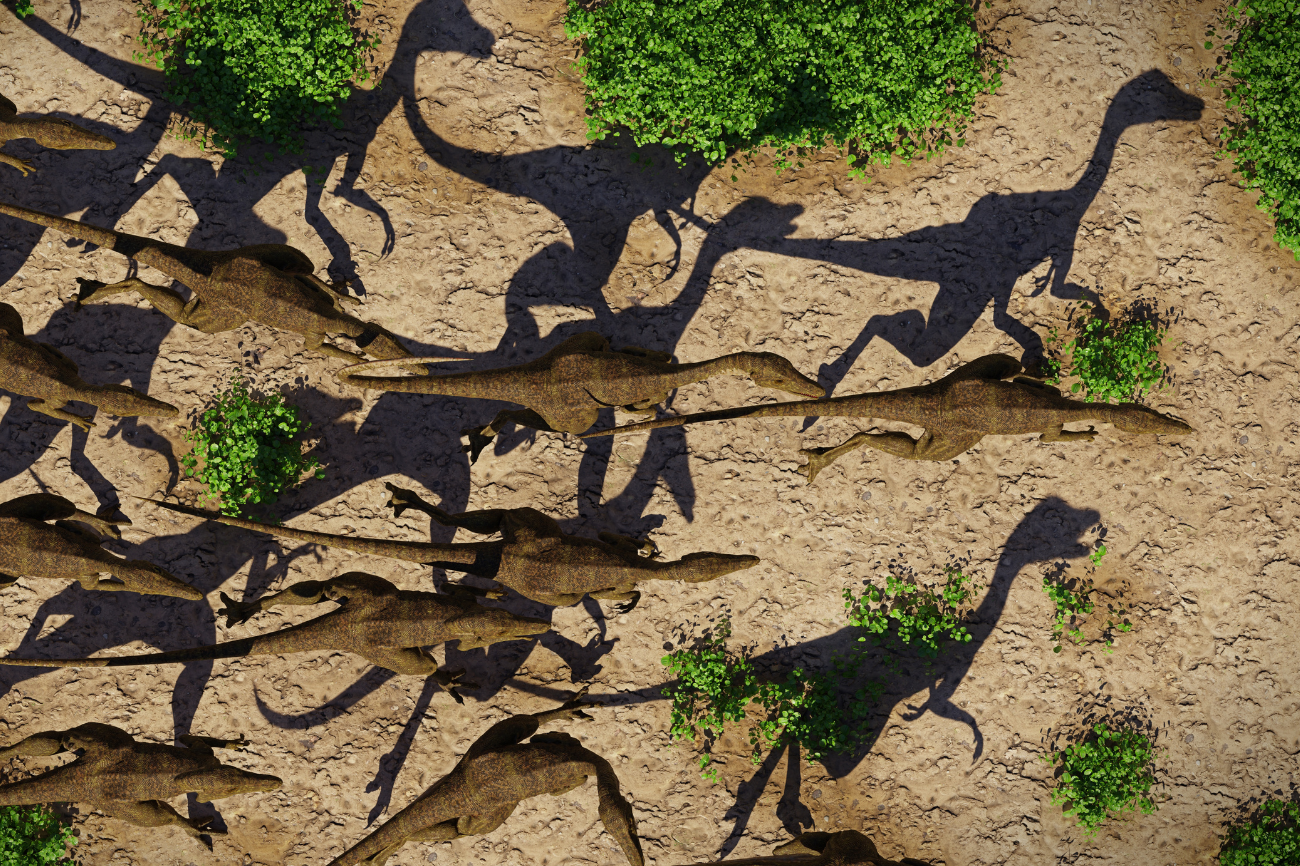Do We Know If Dinosaurs Were Smart Enough to Hunt In Packs?
Posted on Categories Discover Magazine

In a famous scene from “Jurassic Park,” ranger Robert Muldoon aims his sights at a velociraptor, only to be ambushed by another female velociraptor — a “clever girl,” as he says.
Partly because of iconic films like this, pack hunting among theropods (two-legged, meat-eating dinosaurs, including velociraptor and many others) is well ingrained in the public imagination. But researchers are at loggerheads over whether these extinct hunters were ever actually smart enough to work together to take down their prey.
The debate begins with the discovery of several Deinonychus antirrhopus specimens — a theropod whose first name means “terrible claw” — and a paleontological cold case involving a Tenontosaurus, an herbivore from the early Cretaceous.
Read More: The Real-Life Inspiration Behind the “Jurassic Park” Velociraptors
Dino Murder Mystery
In 1969, paleontologists found the partial remains of Tenontosaurus alongside at least four similarly shredded Deinonychus. At that time, the researchers proposed that the carnivores hunted cooperatively to bring down the herbivore before evidently succumbing to early deaths themselves.
This 112-million-year-old “crime scene” is at the origins of the dinosaur pack hunting hypothesis, says Daniel Brinkman, a museum assistant at the Yale Peabody Museum. During later research, Brinkman and his colleague Brian Roach reexamined the evidence; they posit that the incident was altogether more frenzied and less cooperative.
There is some evidence one of the raptors killed another, Brinkman says, and that they engaged in cannibalism — suggesting they fought over the Tenontosaurus remains. His hypothesis is that the event was more akin to a Komodo dragon kill than a wolf pack hunt.
“A solitary Komodo dragon can kill something considerably larger than itself, but as soon as it spills its prey’s blood, every able-bodied Komodo dragon within an 11-kilometer [nearly 9-mile] radius converges on the kill,” Brinkman says.
Similarly, he and Roach argue that Deinonychus and other predatory dinosaurs may have hunted individually or, at most, formed “loose associations.” In other words, each hunter had its own best interests at heart, unafraid to fight over kills or possibly engage in cannibalism.
Read More: Why Cannibalism Is a Common Behavior for Some Animals
The Evidence for Dinosaur Pack Hunting
Beyond this cold case, however, other paleontologists continue to examine other sources of evidence to piece together the pack hunting puzzle.
One study, published in 2020, analyzed stable isotopes in the teeth of fossilized Deinonychus; doing so enabled paleontologists to suggest that this species’ eating habits changed as it grew. “Taken together, these data add to the growing evidence that D. antirrhopus was not a complex social hunter by modern mammalian standards,” they write.
“There’s actually not very much direct evidence for pack hunting in dinosaurs,” says Paul Barrett, a paleontologist and merit researcher with the National History Museum in London. “Instead, what we have are a bunch of clues that taken together indicate that it may have been happening in at least some of the hunters.”
The first piece of the puzzle is evidence of meat-eating dinosaurs that lived in groups some of the time, he continues. Such discoveries exist: Paleontologists in 2006 found a group of Mapusaurus that appear to have lived together and, similarly, a mass grave in Utah suggests this same behavior among tyrannosaurs.
But whether finds such as these are definitive proof that large meat-eaters lived in groups is still debated.
Barrett adds that dinosaur trackways — fossilized prints of predators moving together — can also indicate group behavior. Evidence of this kind is limited but known from some species, such as tyrannosaurs. Yet even this is not conclusive that they hunted as one group.
Read More: What Species Today Are Descendants of Dinosaurs?
Were Dinosaurs Smart Enough to Work Together?
A further step would be working out whether the dinosaur in question had the brain capacity to work cooperatively. Research focusing on the potential brain capacity of theropods argues the case for pack hunting; but these findings are hotly debated amongst paleontologists.
Velociraptor is one such species that some paleontologists believe was potentially smart enough to band together on hunts.
“We can’t take it much further than that, unfortunately,” Barrett says. “So much of it relies on knowing not only what the brains of these animals looked like, but how they actually worked.”
It may well be the case that some dinosaurs — both smaller raptors and larger theropods — adopted elements of pack behavior. And uncovering further evidence could deepen our understanding of theropod behavior.
In Barrett’s view, however, it isn’t a game-changing question to be resolved.
“It doesn’t really affect our picture of the overall evolution of dinosaurs,” he says. “It’s merely an extra bit of diversity.”
Read More: As Meat-Eating Hunters With Strong Jaws, Theropods Ruled the Mesozoic